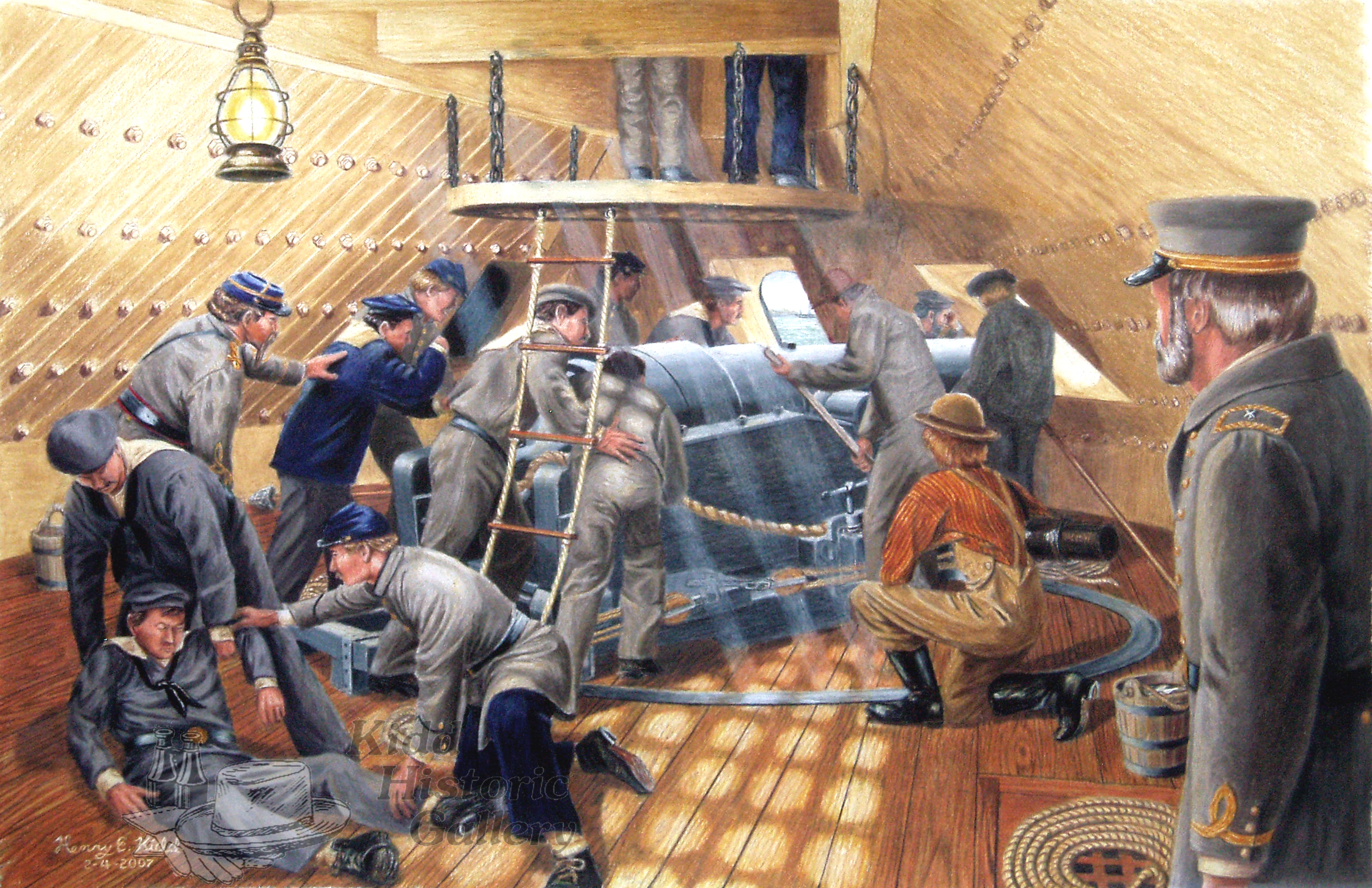 Click on the image
to view it enlarged Click on the image
to view it enlargedGray Clad Iron
The men of the CSS Virginia,
March 8-9, 1862.
By Henry E. Kidd
In the spring of 1861, the charred remains of the USS Merrimack rose from the murky waters of the Norfolk shipyard where Union forces had sunk the frigate to prevent her capture. Although burned to the waterline, the ship's hull and steam engines were intact. For the remainder of 1861 and the first two months of 1862, the Confederate States Navy converted her into an ironclad ram, a first of its kind warship that threatened the Union blockade of Hampton Roads.
On February 17, 1862, the ship was re-commissioned as the CSS Virginia. Inside her long black iron covered body were two seven-inch pivot-mounted Brooke rifles, one forward and one aft, and a battery of two six-inch rifles and six nine-inch smoothbores. In addition, her bow was fitted with an iron ram. The CSS Virginia was truly a ship to be admired and feared.
Depicted in Gray Clad Iron is the forward Brooke pivot-mounted rifle with the suspended pilot house hanging above the gun. Second in command, Lt. Catesby ap Roger Jones, watches as the men load and fire the Brooke rifle, during the battle Hampton Roads. Late in the battle, the commander, Franklin Buchanan, was wounded, so Lt. Jones took command. The CSS Virginia was manned by CS sailors, marines and members of the 12th Va. Infantry.
On March 8, the CSS Virginia entered Hampton Roads and sank two of the Union’s mightiest warships, the USS Cumberland and Congress. Only two men were killed onboard the Virginia. The most common injury occurred when men stood to close to the bulkheads when enemy shells bounced off her sides, causing concussions and left the men to bleeding from their nose and ears.
On March 9, 1862 the CSS Virginia fought one of the most famous sea battles in world history against the USS Monitor. The CSS Virginia changed naval warfare forever. The era of wooden naval vessels had come to an end. This Confederate Ironclad was the birth of the world’s modern navy. |
 Click on the image
to view it enlarged
Click on the image
to view it enlarged